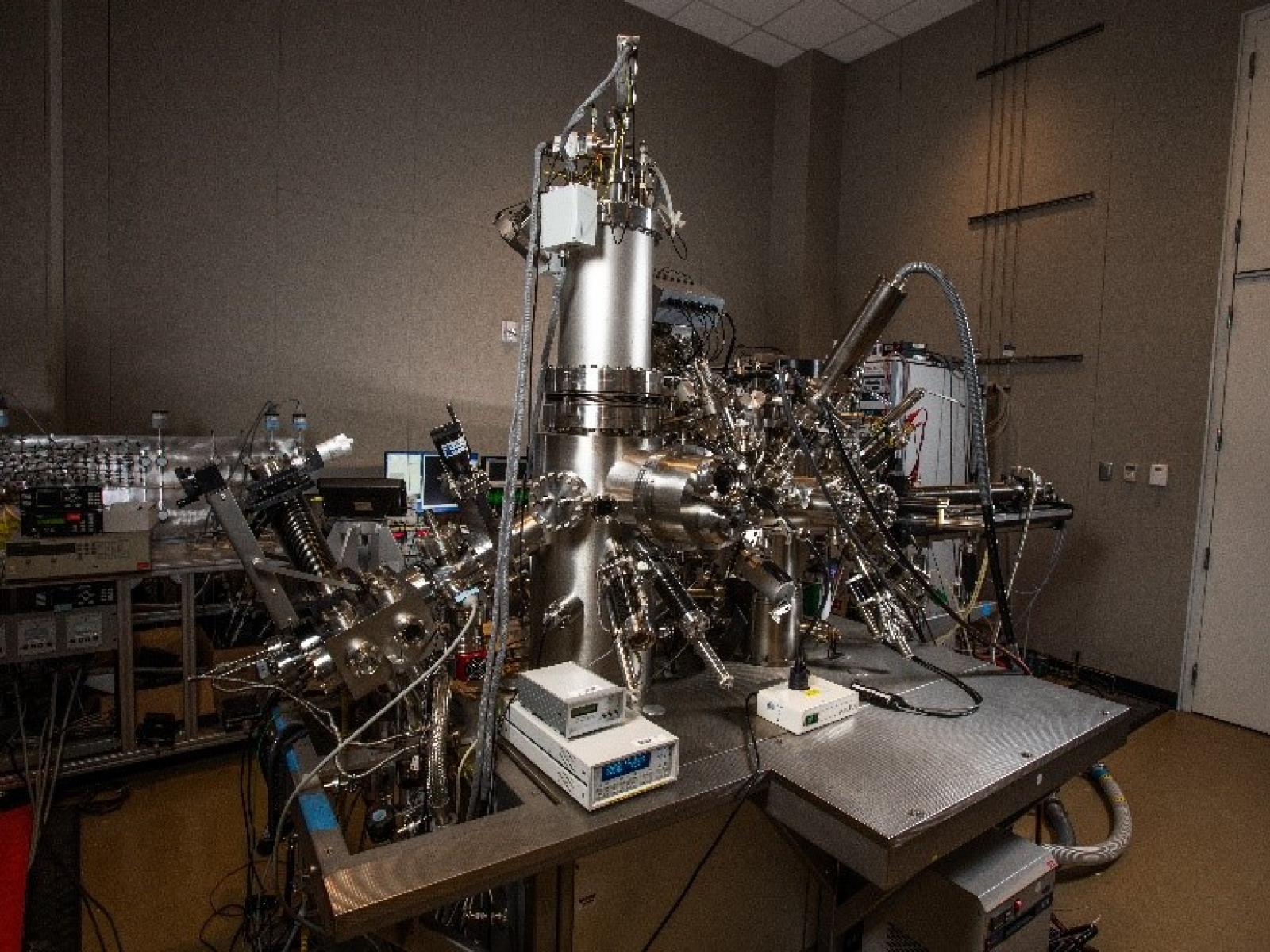Low-Temperature Scanning Probe Microscopy (LT-SPM)
United States

Low-temperature scanning probe microscopy (LT-SPM) is used to image surfaces at the atomic level as well as image individually adsorbed species with single-molecule resolution. The unique combination with a molecular beam dosing further allows for studies of important chemical processes at the interfaces.
This ultrahigh vacuum LT-SPM instrument is the preeminent system dedicated to surface chemistry and physics at temperatures down to 5 K. Operating at low temperatures provides high mechanical stability, superior vacuum conditions, and negligible drift for long-term experiments. With thermal diffusion being entirely suppressed, stable imaging becomes possible, even for weakly bound species. The system consists of a preparation chamber, microscopy chamber, and molecular beam chamber. Each chamber can be isolated from the rest of the system via a gate valve.
The preparation chamber is equipped with X-ray photoelectron spectroscopy, ultraviolet photoelectron spectroscopy, low-energy electron diffraction, Auger electron spectroscopy, ion scattering, e-beam annealing stage, focused-beam sputter gun, and a liquid helium cooled manipulator with a sample heater allowing for sample temperature control between 20 – 1000 K. The microscopy chamber is equipped with an Omicron low-temperature scanning tunneling/atomic force microscope with two stages of cooling, allowing for operation at 5 K with liquid helium cooling, at 80 - 300 K with liquid nitrogen cooling, and at ambient temperature without cooling.
Research Application
- LT-SPM can be used for structural and electronic characterization of catalytically active sites, studying chemical reactivity at the single-site level and single-molecule photocatalytic studies, and determining electronic properties of thin-film and 2-D quantum materials.
- The instrument features drift-free performance, which allows for advanced scanning tunneling spectroscopy and inelastic electron tunneling spectroscopy measurements.
- The microscopy chamber is also equipped with a sample storage carousel, quadrupole mass spectrometer, retractable optical fiber for photochemistry studies, retractable tube doser, and a molecular beam for adsorbate delivery.
- The custom-designed molecular beam chamber is triply differentially pumped and incident on the sample at a fixed polar angle of 60° with respect to the sample surface normal and features two nozzles, one effusive and one supersonic, that are mounted in the source chamber on the XYZ manipulator allowing for their alternate use and precise alignment with the skimmer.